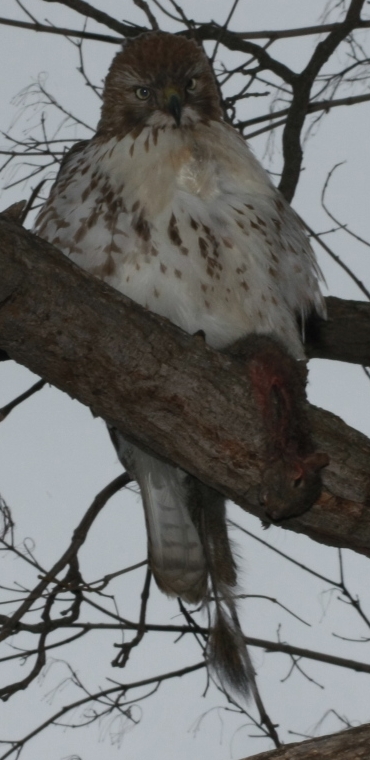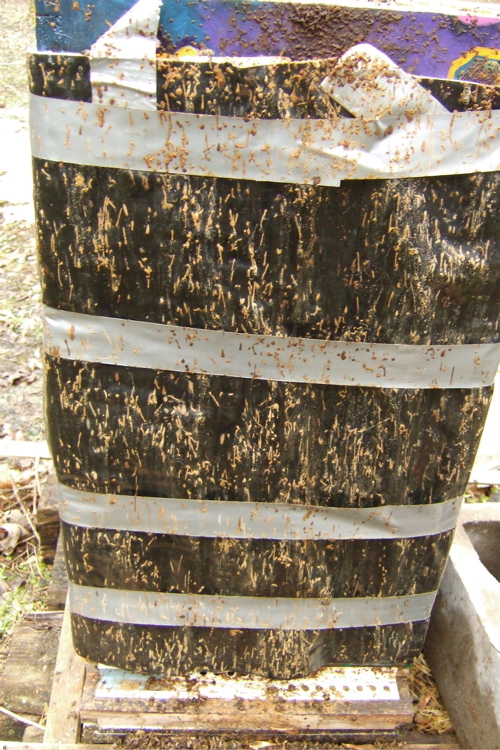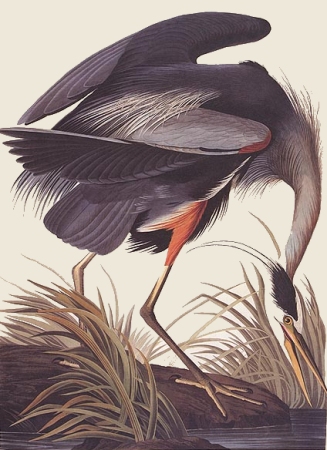 I love this photo that Scott Pakudaitis got at St. Kates of a red-tailed hawk (must have been hatched last year, the tail is still brown and its eyes are yellow).
I love this photo that Scott Pakudaitis got at St. Kates of a red-tailed hawk (must have been hatched last year, the tail is still brown and its eyes are yellow).
Cool shot, Scott!
Birdchick Blog
 I love this photo that Scott Pakudaitis got at St. Kates of a red-tailed hawk (must have been hatched last year, the tail is still brown and its eyes are yellow).
I love this photo that Scott Pakudaitis got at St. Kates of a red-tailed hawk (must have been hatched last year, the tail is still brown and its eyes are yellow).
Cool shot, Scott!
Hello all, NBB here. Sharon's on the way back home, but she just got a call that a segment she pre-recorded will be appearing on KSTP-TV today, probably around 4:45 p.m. We're told that the segment may also be on the web later this week.
If you've been looking for Mike McDowell's most awesome digiscoping blog, you're not alone. He had some server issues last week. Boy, can I relate to that. We had a server crash a few years ago and it was agony trying to figure out how long it would last. Mike's turned out to be a bit worse than our crash, but the great news is that he's back online but in a different location. Click Mike's Birding and Digiscoping Blog to see him at his old location. He's one of the best digiscopers out there.
Part of my plan for coming to Indianapolis was a surprise 70th birthday party for my mom. My brothers and sisters got the party set up while mom and I were at the workshop. My sister Robin had someone make a cake in the shape of Mom's favorite books (above). One of the books included was the Sibley guide.
When the party was over, I asked if I could eat Sibley...which now as I type this sounds really, really weird and I feel like I need to take a shower. Anyway, Mom obliged.
About as heavy in the stomach as it is in the field.
Sunday was a busy day. I went to Eagle Creek Park for their Sunday Morning Bird Walk and afterwards, I gave a digiscoping presentation. My mom and sister Terri came along with me so mom could see the talk (but in reality, this was a ruse to get her out of the house so the rest of the family could set up a surprise 70th birthday party for her). When I got up, it was raining and the rain continued on our drive to the park. I wondered if anyone would show to the bird walk.

If I learned anything today, it's that Hoosier Birders are hardy! It was a huge group for a rainy day (above is only part of the group). People arrived with rain gear and umbrellas (some from as far as 40 miles) to keep up the Sunday morning birding tradition started years ago by Bud Starling. Our guide was Larry Peavler who led the group in search of early spring migrants.
Rain doesn't make for the best birding conditions, but great spring birds were around. This towhee above was doing his "Drink Your Tea!" song. We also saw ruby and golden crowned kinglets, fox sparrows, swamp sparrows and heard a hermit thrush singing (any time a thrush is singing, it's a treat in my book).
After the bird walk, the group gathers for some coffee and treats. I thought it would be informal, some coffee and maybe waxy chocolate donuts from a convenience store--this was practically a tail-gate party! This nice man above had a huge umbrella covering his pot full of bean soup, heated on his portable gril. As he served us his homemade soup, he even provided cornbread! The soup was amazingly flavorful and very welcome on this cold damp morning.
And it didn't stop there! Look at this basket of homemade cookies (four kinds: oatmeal raisin, chocolate, snicker doodle, and chocolate chip). There were also brownies, pumpkin bread, popcorn, coffee, tea, hot chocolate. Bottom line: Indiana Birders don't play around. They bird hard, they eat well. I was stunned at the dedication of the birders and generosity of the group. I hated to eat and run, but I had to set up for my digiscoping workshop. The group gathered around their food and went through the morning checklist. This is a very friendly and fun group of birders. If you live in Indianapolis, you should check it out.
When I made arrangements with Eagle Creek to have the digiscoping workshop there, they told me that the naturalist on staff that day would be "Frog Dawn." She turned out to be someone I knew--we went to the same church growing up. Her little brother and I were in the same Sunday School class (and eventually the same high school). She has her own Frog Dawn Blog (with some great footage of spring peepers) that shares her nature observations at the park. She was kind enough to bring out an education skunk to the program--what a treat and totally a first for me--a skunk at birding program. I started to take photos and someone asked if I was "digi-skunking." Nice.
We had quite a group show up to my powerpoint on digiscoping, some from the walk and some who decided to stay out of the rain and just come for the talk. Afterwards, we played with scopes and adaptors. All went well and we got mom home and surprised her with her party (but not too much, she is 70 after all, can't take those big shocks like she used to).
I did manage to get some fun footage of a male pileated doing some excavating in the rain during out walk. He was right on the side of the road out of the parking lot, many people walked right under him and he chiseled away with nary a care in the world. Definitely one of the more mellow pileateds I've seen in life.
[youtube]http://www.youtube.com/watch?v=FLQMstppr1s[/youtube]
Someone asked if I had another digiscoping workshop planned. Right now, my next digiscoping workshop is in North Dakota in June at the Potholes and Prairie Bird Festival. I'm REALLY excited about this one. I'll give a powerpoint the night before on some basic tips, then we'll go out the next morning on a field trip just for digiscoping. Our goal will not be to rack up lifers, but to just go out, find birds in great light and get shots of bobolink, hawks, western meadowlarks and if we're lucky maybe even Baird's sparrow or chestnut-collared longspur. We'll practice techniques for getting closer to birds without freaking them out as well as camera techniques.
Should be fun.
While in Indiana, I went out for some birding with my mom, my aunt and one of my sisters. In the Hoosier State, spring is ahead of my home in Minnesota, so I welcomed watching the song sparrows on territory singing for a mate (above). There were also a few field sparrows singing which had me excited about hearing them at Carpenter Nature Center in a few weeks--it's such a great song.
My mom and aunts have monitored a bald eagle nest in Mooresville, IN for the last five years. They keep a journal on their observations and I smile when locals drive by, see my mom and say, "Hey, it's the Eagle Ladies. Hi!"
Quite a few of the people who live near the nest have invited my mom and my aunts on their property to look at other birds. One is a bed and breakfast called Lake in the Woods. As we took the long driveway into their property, we passed a few beehives and then came to a whole bee yard with over 20 hives. Their bees were much more active, you could see workers going in and out of hives to look for pollen and propolis. I tried to get my sister, mom and aunt out of the vehicle to look at the hives, but they would not do it. I told them they would be fine, but they rolled up their windows. I swear, you blog about getting stung once or twice and no one wants to go near a hive.
The owners of Lake in the Woods were very generous with their time and showed us around their yard full of chickens, guinea fowl, bees, a couple of pigs, and lots of great birds, including the above mourning dove. A pair took up residence last summer on their porch and fledged two broods. The pair of doves returned three weeks ago and got started again.
I noticed some splashing on the lake behind the bed band breakfast and at first could not believe what I saw. It could not be what I thought it was. But when I got my bins and finally my scope on the splashing...
...I discovered that it was what I thought: a common loon--my state bird. I had to come all the way to Indiana to see the Minnesota state bird. The loon was in the process of bathing and darted and splashed all over the lake. I never saw these in Indiana when I was growing, but I wasn't often at a lake large enough for a loon either.
Must be a migrant loon, on its way north, waiting for the lakes in the far north to open up. Apparently, this species is possible to see on larger Indiana lakes during migration. I got some video of it bathing, it really looked like it was having a good time.
Nice day out.
The big talk right now on ID Frontiers Listserv is an unusual hybrid and for once, they don't mean gulls! Someone got photos of what looks like a blue tit hybrid...but what did it hybridize with? Chickadee? Titmouse? It's not a true blue tit. The photos were taken in New Hampshire and the bottom line is that we don't have blue tits in the US naturally. Every now and then the pop up--especially around Chicago. Rumor is that there's an exotic bird breeder and brings them in as pet birds (yep, European species are legal) and then they get released. There are reports of blue tits, great tits, and European goldfinches. We've seen them in Minnesota and Wisconsin and even Mr. Neil had a blue tit show up in his yard.
Some speculate that whoever is releasing them is trying to establish a US population--which is not a good idea because we don't know what could happen. If they hybridize with native birds, could we get a situation like we have with blue-winged and golden-winged warblers? And really releasing birds in an area where they weren't meant to be and are not prepared for surviving in it, is just down right cruel.
Much like being ahead in time zone, my mother's yard is ahead of me as far as spring goes. I left Minnesota yesterday and drove to Indianapolis, watching the change from the highways. In Minnesota, cardinals are just testing out early morning song and we have one one robin jut establishing territory. On the way down, I stopped for gas in southern Wisconsin and could hear a song sparrow and noticed turkey vultures soaring overhead. As I got towards the Wisconsin/Illinois border I started to see killdeer and a tree swallows.
This morning in my mom's yard there are daffodils blooming and a whole chorus of robins and cardinals singing some hardcore territory songs:
[youtube]http://www.youtube.com/watch?v=l4K4LM0wRTU[/youtube]
Crazy, as I type this, I'm now hearing Carolina chickadees instead of the black-capped I'm used to.
Mr. Neil emailed that he had been by the hives and that Kelli was silent. I emailed back, "You mean Kitty, right?" If you recall, Kitty was in a small cluster and the cold was probably going to kill her. The Kelli hive was strong and loud. No, he meant Kelli. I hoped that he was either seriously jet-lagged, had excessive ear wax and ear hair, or maybe minor hearing loss of his punk band days.
Non Birding Bill and I headed out to the hives before I left for Indy to get the down low. I put my ear to the Kelli hive. It was quiet...too quiet. I wondered what could have happened, she was so healthy, did we finally get colony collapse? We wouldn't know without opening the hive. It was about to rain at any moment, so we decided to take the hive apart and take it back to the garage and inspect what could have been the problem. However I soon as I opened the ceiling, I found a small cluster of live bees.
At first I was hopeful to see signs of life. But wen I looked closer, I could see that the cluster was just too small. It barely covered one frame. She had plenty of food to see her through, but one more hard core cold snap was probably going to do this hive in--which is entirely possible even though the calendar reads spring.
What went wrong?
 I think I have my answer on the front of the hive. Look at all that bee excrement, I think there's a bit of bee dysentery going on. I think the Kelli girls had a case of nosema, but I can't really say that unless I send in a few bees for testing. Bees hold in their poop all winter and then let it go in the spring. They'll go on cleansing flights on warm days to relieve themselves. They shouldn't go all over the front of the hive. When I give the bees their fall feeding, we put a little antibiotic to prevent nosema. Neither hive ate too much of our homemade nectar, which I didn't think about too much since they both had plenty of food. Kind of regretting that now, but then again, how does one forcefeed a bee so it will take her medicine.
I think I have my answer on the front of the hive. Look at all that bee excrement, I think there's a bit of bee dysentery going on. I think the Kelli girls had a case of nosema, but I can't really say that unless I send in a few bees for testing. Bees hold in their poop all winter and then let it go in the spring. They'll go on cleansing flights on warm days to relieve themselves. They shouldn't go all over the front of the hive. When I give the bees their fall feeding, we put a little antibiotic to prevent nosema. Neither hive ate too much of our homemade nectar, which I didn't think about too much since they both had plenty of food. Kind of regretting that now, but then again, how does one forcefeed a bee so it will take her medicine.
So.
Looks like we'll be starting with all new hives this summer and no dividing of older hives.
We were planning on a total of six hives this summer, but that was based on four new packages and splitting Kelli. Since we will only have four, I'm thinking about trying some Russian bees. We've been using the Minnesota Hygenic bees (Italians) based on their "hygienic" behavior of cleaning out brood cells when they sense something wrong. But the more I read about the Russian bee and how it seems to resist varroa mite infestation a bit and can take a hard winter, I'm thinking I'd like to give some a go.
Any blog readers know someone who raises and sells Russian bees in the US and would be willing to send a package to Minnesota?
If you're familiar with the artwork of John James Audubon, you know that he put birds in creative positions. Part of this was that he shot the birds and then put them in a position to paint them. Like this great blue heron:

I've never seen a great blue heron in that exact position to get a fish or frog. I'm sure it's possible, but this isn't the typical heron posture.
Check out this egret. We love Audubon for his early documentation of birds in North America, and we look back and say, "Well, he did the best he could."
Well, he may have been on to something. Check out this National Geographic photo of a great egret--very Audubon. Apologies, Audubon, for ever insinuating that your bird poses were outlandish.